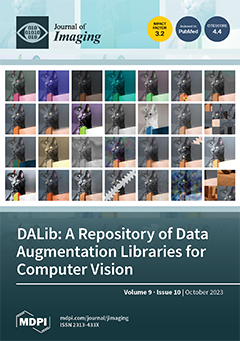Open AccessFeature PaperArticle
Radiomics Analyses to Predict Histopathology in Patients with Metastatic Testicular Germ Cell Tumors before Post-Chemotherapy Retroperitoneal Lymph Node Dissection
by
Anna Scavuzzo, Giovanni Pasini, Elisabetta Crescio, Miguel Angel Jimenez-Rios, Pavel Figueroa-Rodriguez, Albert Comelli, Giorgio Russo, Ivan Calvo Vazquez, Sebastian Muruato Araiza, David Gomez Ortiz, Delia Perez Montiel, Alejandro Lopez Saavedra and Alessandro Stefano
Cited by 4 | Viewed by 3348
Abstract
Background: The identification of histopathology in metastatic non-seminomatous testicular germ cell tumors (TGCT) before post-chemotherapy retroperitoneal lymph node dissection (PC-RPLND) holds significant potential to reduce treatment-related morbidity in young patients, addressing an important survivorship concern. Aim: To explore this possibility, we conducted a
[...] Read more.
Background: The identification of histopathology in metastatic non-seminomatous testicular germ cell tumors (TGCT) before post-chemotherapy retroperitoneal lymph node dissection (PC-RPLND) holds significant potential to reduce treatment-related morbidity in young patients, addressing an important survivorship concern. Aim: To explore this possibility, we conducted a study investigating the role of computed tomography (CT) radiomics models that integrate clinical predictors, enabling personalized prediction of histopathology in metastatic non-seminomatous TGCT patients prior to PC-RPLND. In this retrospective study, we included a cohort of 122 patients. Methods: Using dedicated radiomics software, we segmented the targets and extracted quantitative features from the CT images. Subsequently, we employed feature selection techniques and developed radiomics-based machine learning models to predict histological subtypes. To ensure the robustness of our procedure, we implemented a 5-fold cross-validation approach. When evaluating the models’ performance, we measured metrics such as the area under the receiver operating characteristic curve (AUC), sensitivity, specificity, precision, and F-score. Result: Our radiomics model based on the Support Vector Machine achieved an optimal average AUC of 0.945. Conclusions: The presented CT-based radiomics model can potentially serve as a non-invasive tool to predict histopathological outcomes, differentiating among fibrosis/necrosis, teratoma, and viable tumor in metastatic non-seminomatous TGCT before PC-RPLND. It has the potential to be considered a promising tool to mitigate the risk of over- or under-treatment in young patients, although multi-center validation is critical to confirm the clinical utility of the proposed radiomics workflow.
Full article
►▼
Show Figures






